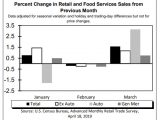
A Japanese College Professor Allegedly Taught Students How to Make Ecstasy
April 18, 2019This article originally appeared on VICE Asia.
A Japanese college professor could face up to ten years in prison for allegedly teaching students how to manufacture MDMA. Sixty-one-year-old Tatsunori Iwamura, a professor at Matsuyama University’s College of Pharmaceutical Sciences in Ehime prefecture, admitted to showing his class how to make ecstasy despite the fact he knew it was illegal, Kyodo News reports. He later told investigators he did it to help his pupils with their “education.”
Investigative sources claim Tatsunori instructed students in his pharmaceutical science class to make MDMA, as well as the designer drug 5F-QUPIC, back in 2013. Drug enforcement authorities believe 11 students produced ecstasy under the professor’s instruction, four of whom have also been referred to prosecutors along with an assistant professor. The university has declared that it will discipline Tatsunori and the assistant professor once the investigation has ended, The Guardian reports.
Manufacturing narcotics for academic purposes isn’t actually illegal in Japan, as long as researchers obtain a license from the prefectural government beforehand. Tatsunori did in fact hold a license from a prefecture outside of Ehime, according to unnamed sources, but it had expired before he taught students how to make molly. Those sources also explained that the professor had been conducting research on what are known in the country as “dangerous drugs”—that is, those that contain chemical agents that cause hallucinations or have a stimulant effect.
"We sincerely apologize for causing major concern to students and their parents," said Tatsuya Mizogami, president of Matsuyama University.
Drug enforcement officers, who have been questioning Tatsunori since January, searched both his home and laboratory based on a tipoff from someone outside the university. They failed to uncover any of the ecstasy in question, as an official from the local health ministry suggested that it had “probably been discarded.” They did, however, find traces of 5F-QUPIC. The cannabis-like drug was banned in Japan in 2014 after it was suspected of causing traffic accidents, the Japan Times reports, and is currently classified as a Schedule 1 substance in the United States.
If charged and convicted, Tatsunori could face up to ten years behind bars.
Sign up for our newsletter to get the best of VICE delivered to your inbox daily.


